Meteora Tour
Estimated Duration
10 Hours
Estimated Distance
490 Km

Holy Monastery of the Transfiguration (Metamorphosis) of Christ (Great-Meteoron)
The monastery, built on an imposing rock, is the oldest, the biggest and the most important among the monasteries of Meteora which are preserved today. It was founded little before the mid-14th century (around 1340) by a scholar monk of Mount Athos, Saint Athanasios Meteorites. In the beginning, he built on the rock a church to the Mother of God. He also dedicated the monastery (the Monastery of the Virgin Mary of Meteora rock-Petra-) to her. Besides, he built cells so that the monks who began to concentrate there could live. Then, he built another church honoured to the Transfiguration of Christ. This church constituted the monastery katholikon and the definitive name of the monastery attributes to this church.
An important person was also his successor and second founder of the monastery, monk Saint Iosaph (one-time king Ioannis Uresis Paleologos). During the 40 years of his monastic life, Saint Iosaph built cells, hospital, cistern, he renovated the church of the Transfiguration (it is the sanctuary which has today the form of a church) and he was among the first ones who built the monastery of Ypsilotera (of Kalligraphon) on a steep and inaccessible rock opposite the monastery of Great Meteoron.
The monastery flourished particularly in the mid-16th century. Thanks to imperial and royal donations it became the most powerful of all the monasteries of Meteora. In 1544/1545, today’s magnificent nave and narthex of the imposing katholikon (the old church turned into sanctuary) were built. Later, a refectory, a kitchen, a hospital-home for the aged, a tower, small chapels and joined ladders were built. On the other hand, the monastery suffered from destructions: incursions, thieving, looting and fires.
The monastery of Great Meteoron has already more than 600 years of existence. Its monastic presence and its fame have never ceased to exist. It is a real bastion of orthodox monasticism and Christendom.
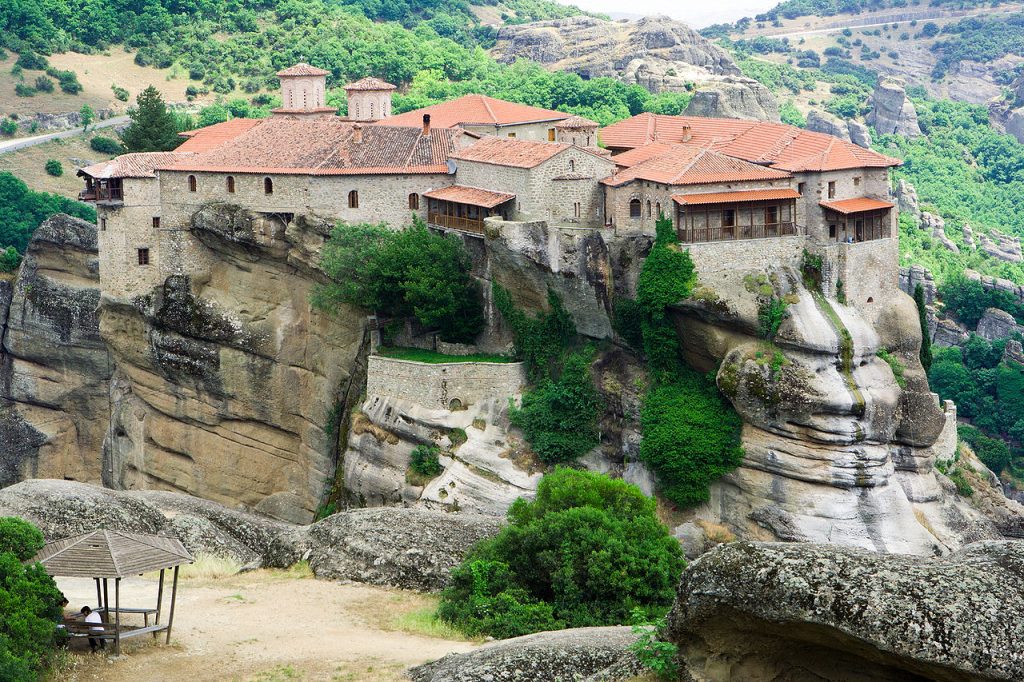
Holy Monastery of Varlaam
The monastery of Varlaam owes its name to the ascetic Varlaam, who first inhabited the rock in the 14th century. The history of the monastery actually begins at the beginning of the 16th century, when the brothers Nektarios and Theophanes of Giannia, descendants of an old Byzantine family of Epirus, settled and organized their commune on the rock.
In 1518, the Apsarades completely renovated the chapel of the Three Hierarchs, which was built on the site of the original katholikon of the monastery built by Barlaam, in 1536 they built the tower of the brizonios and in 1541 they built the present katholikon, which is dedicated to All Saints. In 1627 the chapel of the Three Hierarchs was rebuilt on the site of the old katholikon built by the Apsarades and in 1637 it was painted by the artistic crew of the priest John and his children, who came from Kalambaka.
The hagiography of the catholic of the monastery was done in three phases. In the first phase, in 1548, the famous hagiographer Fraggos Katelanos painted the frescoes of the sanctuary steps and the nave. In the second phase, in 1566, the lite was painted by the Theban hagiographers Georgios Kontaris and his brother Fraggos, with the sponsorship of Antonios Apsaras, Bishop of Vellas, Ioannina. The last phase of the decoration (1780 and 1782), which is attested by the edifice inscription on the north-western pylon above the representation of the Virgin Mary, probably refers to a small-scale intervention of which no visible evidence can be discerned.
This last phase is part of the period in which the monastery continued to flourish, a bibliographical laboratory was organised and it received rich donations from the rulers of Wallachia.
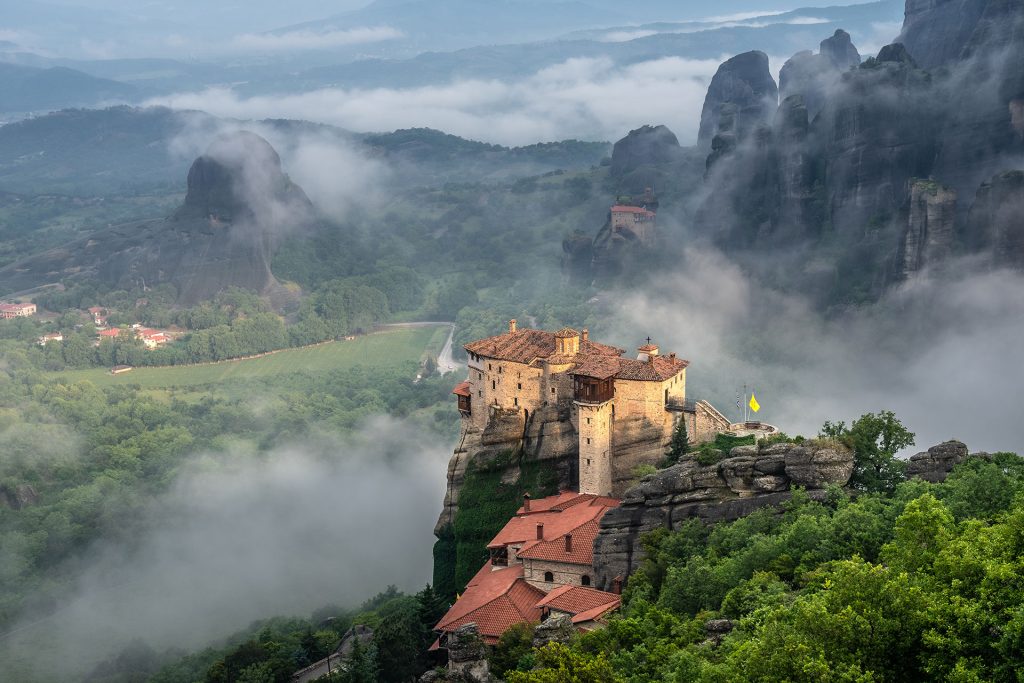
The Monastery of St. Barbara or Roussanou
The Holy Monastery of Roussanou, located at Meteora Greece was first established in the 14th century. It received the name “Roussanou” probably from the first hermit-monk who settled on the rock around that period. The monastery is one single building occupying the entire available surface of the cliff.
It creates the impression that the building was carved out from the cliff as the extension of the rock itself!
It was mainly built in three main levels in the 16th century, in an effort to increase the available space inside. The main cathedral was founded at the end of the 16th century and was decorated thirty years later by a monk who was a very skillful artist and lived at the monastery of Roussanou.
Compared to other rocks where monasteries were built, the one of Roussanou has a lower elevation, which makes it more accessible. The monastery was initially founded by monks and it suffered severe damage during World War II. It became a convent not that long ago in 1988 and today more than 15 sister nuns live in the small and cozy monastery of Roussanou.
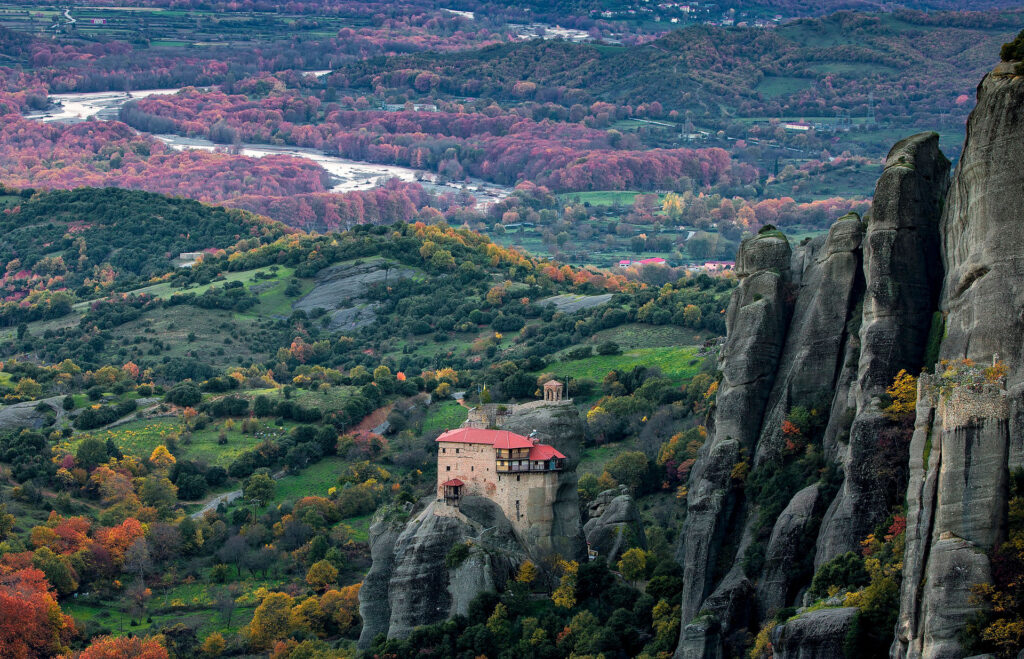
Saint Nicholas of Anapafsas monastery
The Holy Monastery of Saint Nicholas of Anapafsas is the first Monastery that we encounter on our way to the Holy Meteora. The monastery is only a short walk from Kastraki village just 1km away. For the name “Anapafsas” there are numerous interpretations two of which are the most popular.
The first one is that the name “Anapafsas” was attributed by one of the monastery’s benefactors, while the second explanation has to do with the monastery’s position being the first to be encountered on the way up to the other Meteora monasteries, and probably served to the pilgrims and other visitors as a resting place before continuing further up. Resting translates into Greek “anapafsys”. So, Saint Nicholas of Anapafsas literally means Saint Nicholas the one who rests you.
We have to keep in mind that back then there weren’t any hotels or rooms to let, so all travelers usually had to either camp outside or seek shelter to places like monasteries or even on common people’s houses. That’s why for the ancient Greeks one of the biggest blasphemies of all was to deny to provide “philoxenia” for shelter to any traveler asking for it.
The monastery itself was built on an 80 meters’ high rock and is surrounded by the deserted and ruined monasteries of Saint John Prodromos, the Pantocrator and the chapel of Panagia Doupiani. The Monastery of St. Nicholas Anapafsas was founded at the end of the 14th century. The limited surface of the rock forced the building of the monastery to be built vertically on floors, one level on top of the other.
Access to all monastery’s different floors is achieved through an inbuilt staircase.
At the entrance of the Monastery lie the Church of St. Anthony and the crypt where codes and the monastery’s heirlooms were previously stored. On the walls, paintings of the 14th Century can be seen. The Catholicon, where St. Nicholas is honored, is on the second floor and it is elongated and stuck on to the south side of the wall of the monastery. The dome of the church is low and has no windows.
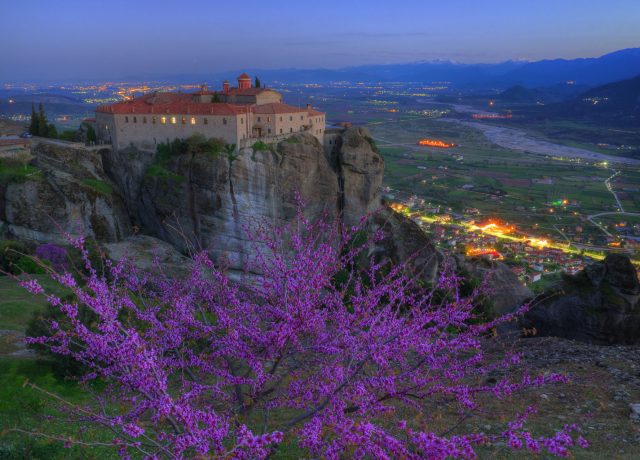
Agios Stefanos Monastery
The monastery of Agios Stefanos or St. Steven is by far the most accessible monastery, where instead of steps you simply cross a small bridge to reach the entrance. It is ideal for visitors with mobility issues who cannot use the steps and yet wish to have a real experience of a Meteora monastery.
The beginning of the Agios Stephanos monastery dates back to the early 12th century and the first hermit monks who settled on the cliff. Centuries later, Hosios Antonios, in the first half of the 15th century, and Hosios Philotheos, who renovated or rather rebuilt from its foundations the old small and elegant Catholicon, the present church of Agios Stephanos, in 1545 are mentioned as its founders.
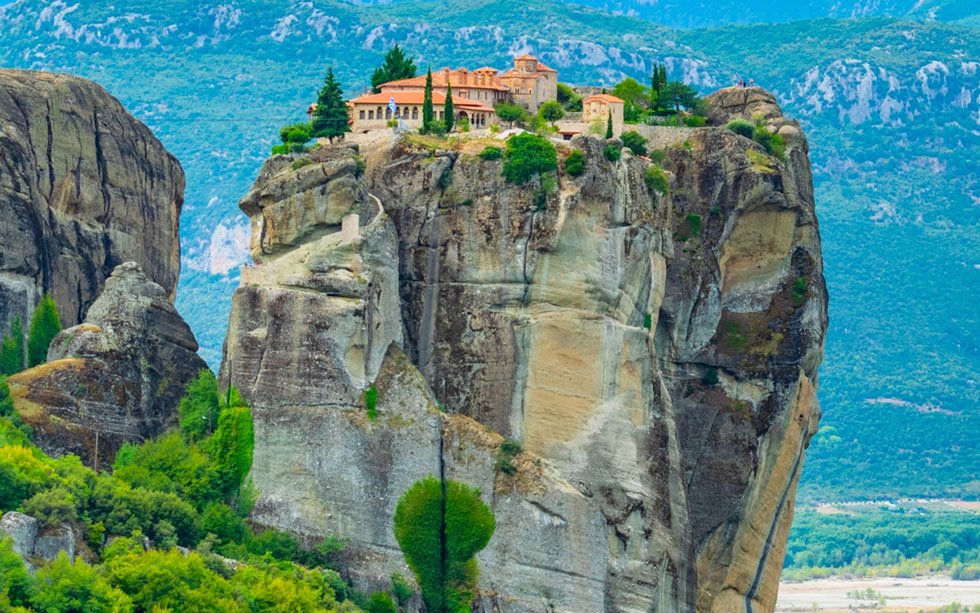
Monastery of the Holy Trinity, Meteora
The monastery of the Holy Trinity was made in 1488 by a monk named Dometios. But sources reveal its existence since 1362. The oldest building phase of the monastery is represented by the current church, which was built as we learn from the inscription in the year 1475/6 and is dedicated to the Holy Trinity.
The frescos of the church was made by the painter and priest named Antonios and his brother Nicholas, in 1741. The Catholic esonarthex was built in 1689 and decorated in 1692. In 1682, with the expenses and trouble of Hieromonk Damaskinou, Jonah and Partheniou, the chapel of St. John the Baptist was built and decorated.
In 1684 a small sacristy was added to the southeast corner of the church which is connected with the temple. The monastery owned 124 manuscripts (kept since 1953 in the Monastery of St. Stephen) including codes of the monasteries of Anapafsas and Rousanou.
Visitors to reach the monastery must cross a pedestrian path downhill until the foot of the cliff and then climb 145 carved steps. Left of the entrance to the monastery is the chapel of St. John the Baptist, a small rotunda is carved into the rock. At the end of the hallway (right) is the catholicon of the monastery. It is a small two-columned cruciform church with a dome and a spacious plain on the west side.
Northwest of the building complex of the monastery, behind the church, the visitor arrives at the highest point of the rock, from the balcony you can enjoy a rare view of the other monasteries and the Meteora rocks.

